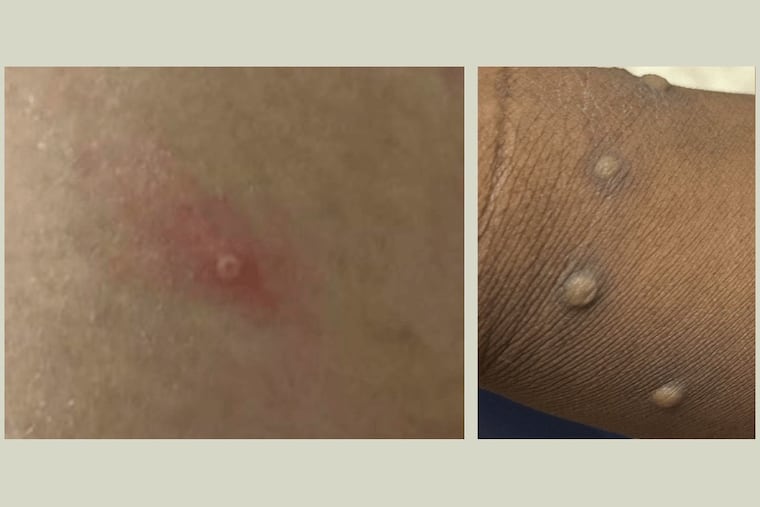Philly’s monkeypox patient is now one of 21 in the U.S.
The CDC said 16 patients identify as men who have sex with men, but that the virus can spread to anybody.

Philadelphia’s suspected case of monkeypox has now been confirmed, city officials said on Friday.
The patient‘s close contacts are being identified so that any who are deemed at high risk can be offered a vaccine, the city Department of Public Health said.
The news came as the CDC announced two additional suspected cases elsewhere in the U.S., bringing the total of confirmed and suspected cases to 21. Agency physicians said the public health risk remains low, as no U.S. deaths have been reported and the illness spreads far less readily than COVID. Yet they cautioned that early signs of monkeypox can be subtle, and they urged anyone who is unsure to consult their health provider.
» READ MORE: Monkeypox case identified in Philadelphia, likely first in the state
CDC officials also provided details on 17 of the 21 patients for which information was available. Sixteen identified themselves as men who have sex with men. But the agency said there is no evidence the virus spreads more easily in that community, and that it may be circulating there simply because members were among the first to be exposed.
“Anyone can get monkeypox,” said Capt. Jennifer McQuiston, deputy director of the CDC’s Division of High Consequence Pathogens and Pathology, speaking at a noon media briefing.
Tracing the monkeypox outbreak
The virus spreads primarily through close, skin-to-skin contact. It infects thousands of people each year in Africa, but its spread outside that continent this year is unusual — with hundreds of cases in 29 countries where the virus is not endemic.
The type of monkeypox that has infected U.S. patients originated in West Africa and has a fatality rate of 1%, generally causing less severe disease than a type of monkeypox now circulating in Central Africa, the CDC said. No deaths have been reported this year in the U.S. or other countries where the virus does not normally circulate, McQuiston said.
The U.S. has more than enough vaccine doses and antiviral treatments for all who might need them, the agency said. Vaccination is typically recommended for those in whom the illness is in its early stages, and it also is offered for any contacts deemed to be at high or intermediate risk of infection, such as in the Philadelphia case.
» READ MORE: Opinion: How worried should I be about monkeypox?
Elsewhere, the contacts for 13 initial U.S. patients have been identified, including 56 who were deemed at high risk of infection, 117 at intermediate risk, and 235 at low or uncertain risk, the CDC said.
The agency recommends that contacts be monitored for fever, rash, and other possible symptoms of monkeypox for 21 days after exposure.
The rash typically begins with rounded, flat lesions, later progressing to raised lesions that look “like a pencil eraser,” McQuiston said.
Of the 17 patients for which detailed information was available, most had either traveled recently to another country where cases have since been identified, suggesting they became infected while abroad, or they had contact with someone who had just returned, McQuiston said.
But the exposure for at least one patient is unclear, suggesting the virus may be circulating at low levels in the community, McQuiston said.
This article has been corrected to reflect that the Philadelphia patient was not vaccinated, and that city officials have not confirmed any information about other treatments.